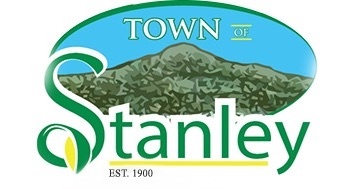
By Randy Arrington
STANLEY — It’s become the lingering saga of the ole’ No. 7; but the long-winding, 14-year tale of a new town well may come to an end in the next 18 months.
First dug in 2007, a well that is projected to generate 350 to 400 gallons per minute and serve the town’s needs “for many years to come”, has now sat dormant for well over a decade due to funding obstacles and confusion with county officials.
When the first earth was turned over for Well No.7, it sat on property owned by the Page County Economic Development Authority. The well, which sits in a field across from the county’s animal shelter, was included in construction plans for an industrial park dubbed “Project Clover.” The industrial park was never built after plans for a state-of the-art data center called “Project Braveheart” (planned by Premiere Technical Services in Luray ) fell through in 2011.
The well was abandoned as Stanley officials waited on county officials to follow through on a “gentlemen’s agreement” to work with the town to complete the well. The county never followed through on that agreement after Project Clover was abandoned.
Then in March 2015, the county granted a general warranty deed to the town for Well No. 7, its equipment and a one-acre lot, as long as the town completed the well within five years. The deadline for that agreement fell in November 2020.
Stanley officials had estimated that it would take about $200,000 to complete the well. In October 2019, the bid came in at $589,972. This forced the town to seek new funding sources to cover the higher costs — which would take more time, causing the town to miss its November deadline.
So, in December, the EDA granted the Town of Stanley an additional year to complete Well No. 7, with a new deadline of November 2021.
Last Wednesday, the Stanley Council voted unanimously to pay Racey Engineering of Luray $35,350 to conduct a preliminary engineering study and coordinate an environmental assessment (through Stantec Consulting Services Inc.) of Well No. 7. The studies are needed to complete funding applications through the U.S. Department of Agriculture that could pay up to 75 percent of the costs.
“We have to have [these reports] before we can go any further with the well,” Town Manager Terry Pettit told council members at last Wednesday’s meeting. “We don’t have much of a choice.”
Gary Shirley of Racey Engineering joined the council meeting by phone on Wednesday to explain the details of their proposal.
“We thought because this project involved previously disturbed earth we wouldn’t have much problem, but when the quotes came back [for preliminary studies] they were three or four times what we thought they would be,” Shirley told council members. “The problem we ran into and what changed things is that the new well you are proposing will be drawing more water out of the ground than the two wells you would be replacing.”
When the USDA clarified that point, it drove initial costs for an environmental assessment from $12,700 up to an average of $23,000 between two new quotes. That study is included in Racey’s overall proposal of $35,350. However, up to 75 percent of all costs of the new well — including engineering and environmental studies — could be paid through the UDSA’s Rural Development grants.
These federal funds can help pay for public facilities and infrastructure for water and sewer and may be presented as low-interest loans or as grants, which require no payback. How much these grants will cover will be determined by the Median Household Income in the town, and will likely be either 45 percent or 75 percent of the costs. If the grants are approved at 75 percent, the town could pay less than $150,000 to get the new well on line.
Pettit told council members last week that he thought the town “had a good chance” of getting the USDA funding.
Shirley told the council that Racey Engineering would complete the preliminary engineering report by late summer and then proceed with the bidding process. The application for USDA funding can not be submitted until late August or early September.




Be the first to comment